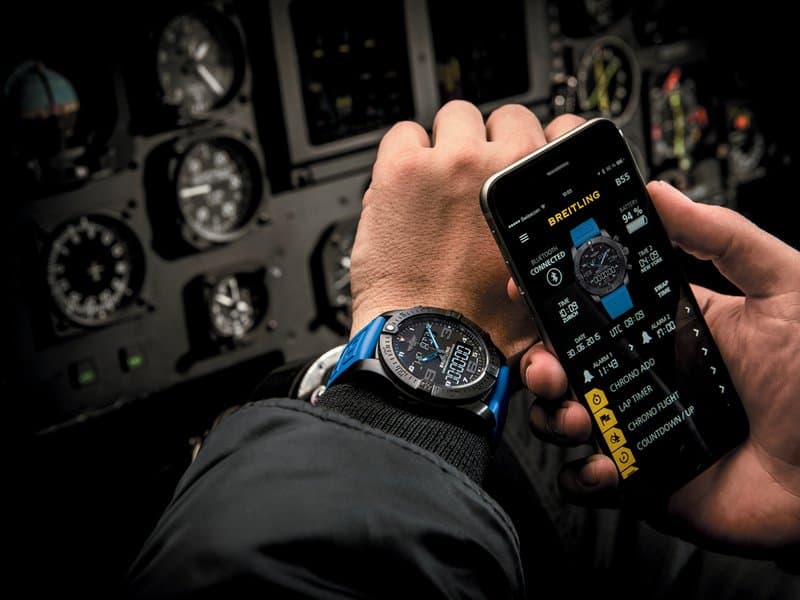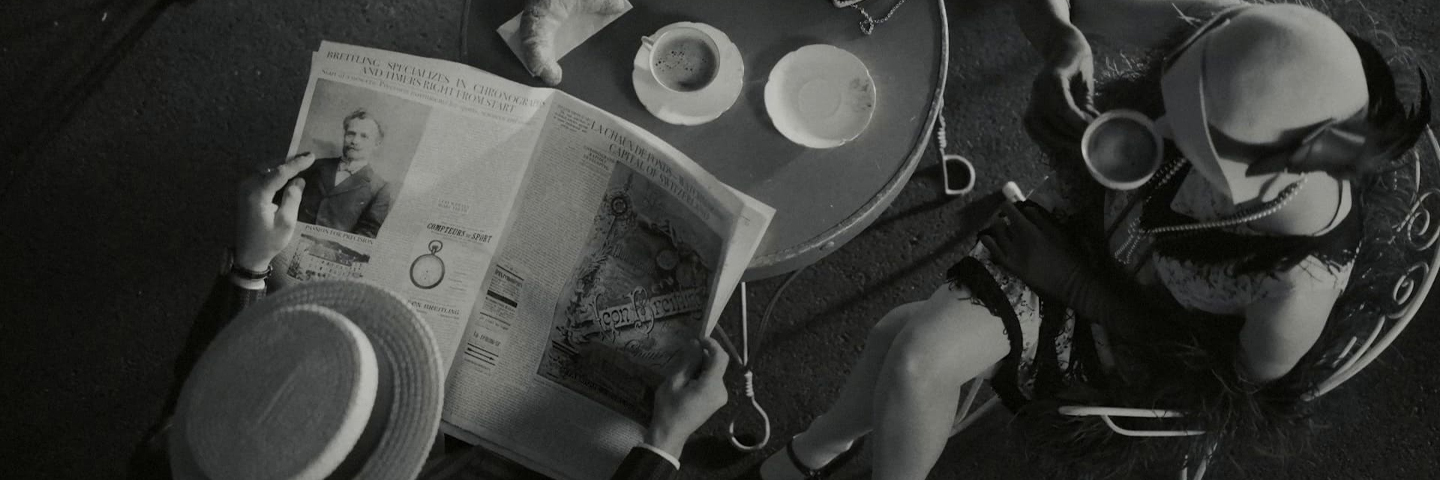THE BREITLING STORY
Léon Breitling was a skilled watchmaker who crafted both timepieces and intelligent measuring tools in his St. Imier workshop. Within a short time, the innovative features that he developed for his pocket watches earned Léon’s company a formidable reputation.
LÉON BREITLING FOCUSED ON CHRONOGRAPHS
Léon Breitling focused on chronographs, which were increasingly in demand at the time for industrial, military, and scientific applications as well as for athletic organizations. In 1889, Léon Breitling was granted a patent for a simplified model, which distinguished itself from its competitors through its sleek design, uncomplicated manufacturing process, and straightforward maintenance.
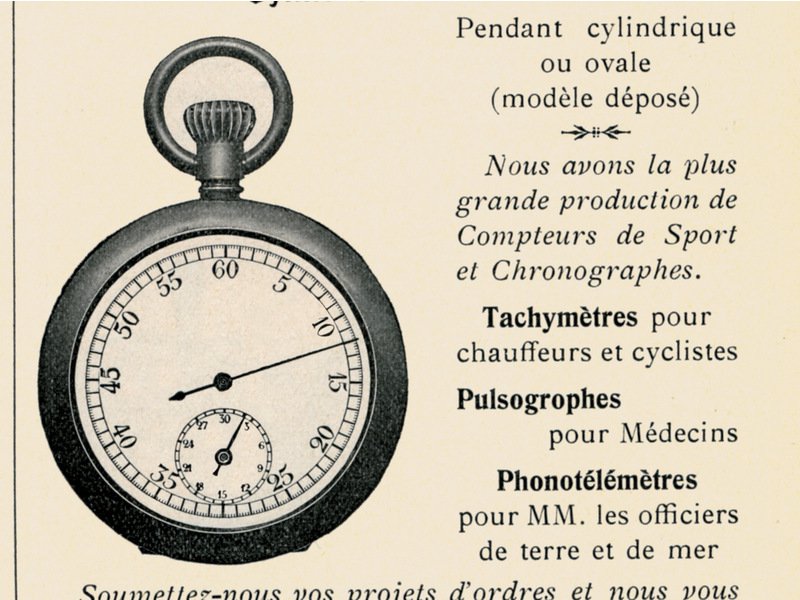
Léon Breitling focused on chronographs, which were increasingly in demand at the time for industrial, military, and scientific applications as well as for athletic organizations. In 1889, Léon Breitling was granted a patent for a simplified model, which distinguished itself from its competitors through its sleek design, uncomplicated manufacturing process, and straightforward maintenance.
Awards followed, establishing the company’s reputation and prompting a move to a new factory in La Chaux-de-Fonds in 1892. L. Breitling, Montbrillant Watch Manufacturing soon had 60 employees focused on making precise, innovative timepieces.
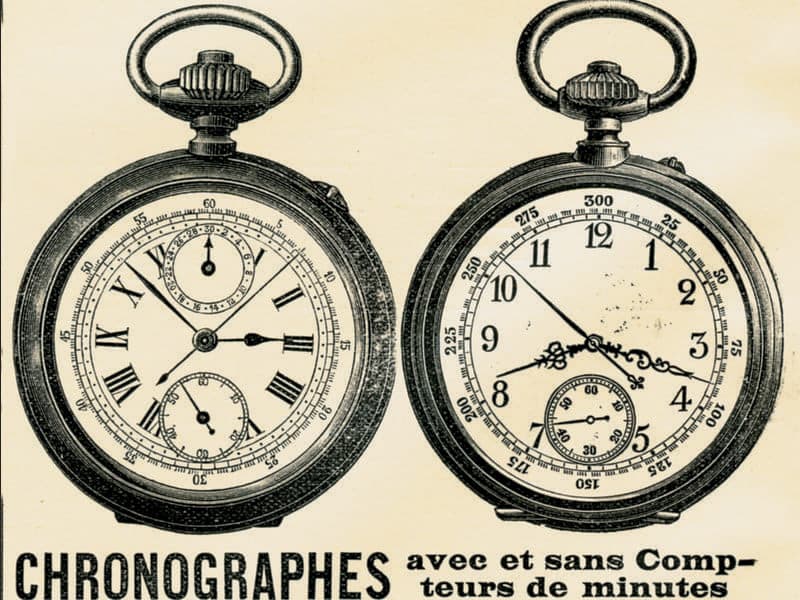
In 1893, the company patented a movement with an astonishing power reserve of eight days. In 1896, Breitling reached a major milestone: a chronograph that was accurate to two-fifths of a second. A model with a pulsograph, which featured a logarithmic scale ideal for measuring a patient’s pulse rate, was highly esteemed by physicians. Within a decade, the company had sold more than 100,000 chronographs and stopwatches.
In 1905, as automobiles were emerging as the preferred mode of transportation, Léon Breitling patented a simple timer/tachymeter that could measure any speed between 15 and 150 km/h. The Vitesse timer allowed drivers to calculate their speeds – but also enabled police to do the same, and soon afterwards the first speeding tickets were issued in Switzerland.
GASTON BREITLING SHOWS WHAT HE CAN DO
Léon Breitling passed away in 1914 and his son Gaston took over the family business. He had inherited his father’s pioneering spirit, innovative flair, and an insatiable passion for chronographs, which he demonstrated in 1915 with the launch of one of the world’s first wrist chronographs with a separate push-piece above the watch crown.
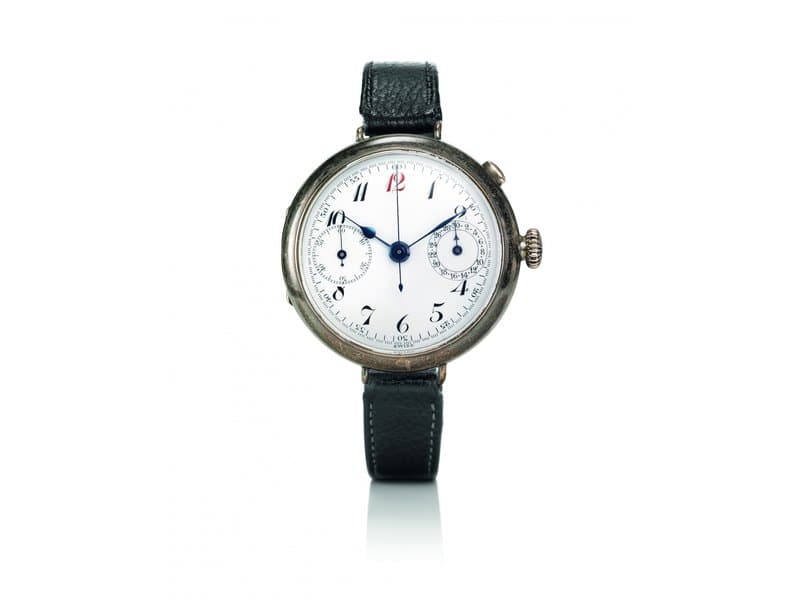
INTO THE FUTURE WITH WILLY BREITLING
Gaston Breitling passed away unexpectedly in July 1927. His son Willy, then only 14 years old, was not yet old enough to fill his father’s rather impressive shoes, so for the next five years the company was managed by an external team.
The company survived the Wall Street crash of 1929 and the Great Depression that followed, and in 1932, Willy Breitling, though still a very young man, was ready to assume leadership of the company. When he took the helm, chronographs were still at the heart of the business. Breitling’s collection included more than 40 different models for the wrist or the cockpit.
Until 1934, chronograph wristwatches only had a single pusher, so after a start and a stop, a reset inevitably followed. Willy Breitling saw this as a key deficiency, and in 1934, he filed a patent for the world’s first wrist chronograph with two pushers.
And that was only the beginning. In 1936, he introduced a specially designed aviator chronograph with a black dial and striking luminescent numerals and hands as well as a practical rotating bezel with a useful, versatile pointer arrow that also glowed in the dark.
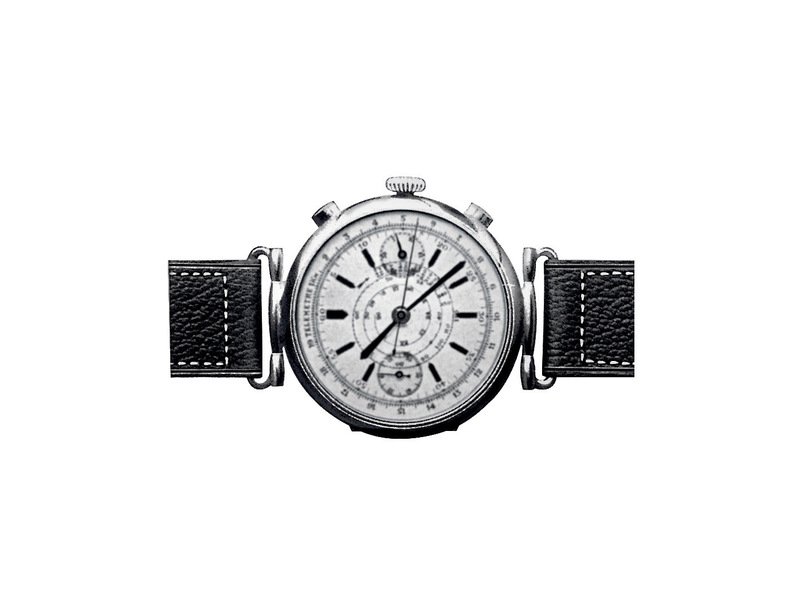 Among Willy Breitling’s celebrated pioneering achievements was the establishment of the Huit Aviation Department in 1938. Fully aware of the strict requirements for military and civil aviation, its name – the French word for “eight” – was a perfect choice. It reflected the eight-day power reserve offered by many dashboard clocks and other dedicated chronometric instruments, including wrist chronographs, which the department was developing for professional aviators. In addition to their impressive power reserves and easy readability, these onboard chronographs were distinguished by their lightweight cases. The Huit products immediately attracted the attention of military aviators and, as World War II loomed, the Huit Aviation Department received a large order for chronographs from the Royal Air Force, gaining Willy Breitling’s brand access to the cockpits of the legendary bombers and fighter planes that performed so brilliantly throughout the war.
Among Willy Breitling’s celebrated pioneering achievements was the establishment of the Huit Aviation Department in 1938. Fully aware of the strict requirements for military and civil aviation, its name – the French word for “eight” – was a perfect choice. It reflected the eight-day power reserve offered by many dashboard clocks and other dedicated chronometric instruments, including wrist chronographs, which the department was developing for professional aviators. In addition to their impressive power reserves and easy readability, these onboard chronographs were distinguished by their lightweight cases. The Huit products immediately attracted the attention of military aviators and, as World War II loomed, the Huit Aviation Department received a large order for chronographs from the Royal Air Force, gaining Willy Breitling’s brand access to the cockpits of the legendary bombers and fighter planes that performed so brilliantly throughout the war.
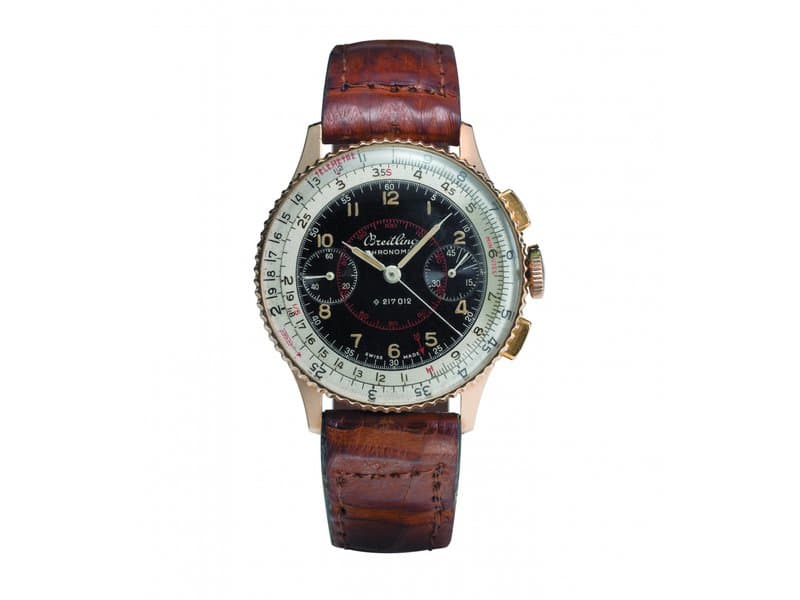
In 1940, Breitling was granted the patent for the Chronomat, which is characterized by a patented rotating slide rule for technicians and scientists. The eventful 1940s were also marked by such groundbreaking creations as the Premier line, which was introduced around 1943. The decision to use the French word for “first” for this collection was no accident – it referenced the civil, non-military use of chronographs, relying less on innovation and more on first-class quality, elegance, and attention to detail. With diameters of up to 38 mm and elegant designs, the Premier line, available in stainless steel or solid gold, marked yet another significant milestone for Breitling.
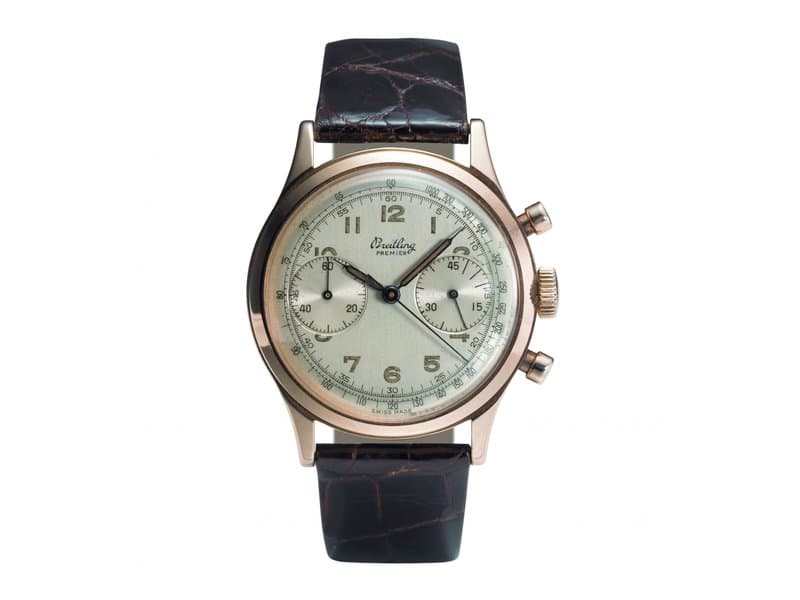
Two of the more intricate highlights of the era were the Duograph, which was introduced in 1944 and featured a split-second complication, and the Datora line, which was introduced immediately after the war and is characterized by its calendar and moon phase display.
THE 1950’S AND 1960’S: THE INNOVATIONS CONTINUE
1952 marked the debut of an unprecedented watch prototype that remains an icon to this day: the Breitling Navitimer. Its name is a portmanteau of the words “navigation” and “timer.” Equipped with the flight-specific slide rule that was introduced with the Chronomat, it is little wonder that countless pilots, airlines, and aircraft manufacturers have opted for this timepiece ever since.
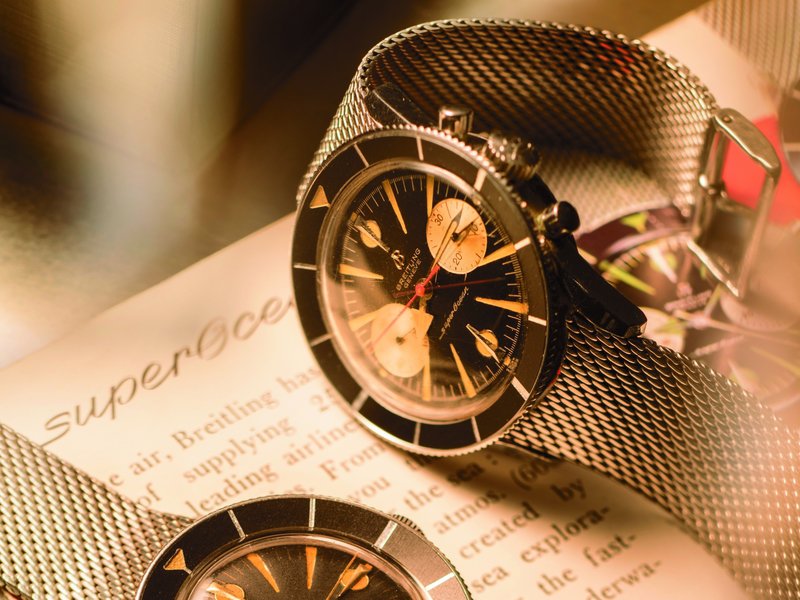
1952 marked the debut of an unprecedented watch prototype that remains an icon to this day: the Breitling Navitimer. Its name is a portmanteau of the words “navigation” and “timer.” Equipped with the flight-specific slide rule that was introduced with the Chronomat, it is little wonder that countless pilots, airlines, and aircraft manufacturers have opted for this timepiece ever since.
Another milestone in the 1950s was the extraordinary SuperOcean. Willy Breitling was determined to make a splash (literally!) on his 25th anniversary as head of the family business. He did so with this diver’s watch, which featured a water-resistant case up to 20 bar (or depths of up to 200 meters). Building on the SuperOcean’s momentum, Breitling launched the simple but robust TransOcean in 1958. The popularity of this shockproof, anti-magnetic, and “super-sealed” automatic chronometer was buoyed by the brand’s reputation for aviation precision.
In 1962, a version of the Navitimer designed by astronaut Scott Carpenter joined the original classic. An important feature was its 24-hour dial, because in space, it was impossible to distinguish between day and night. Carpenter used the watch on May 24, 1962, during his mission aboard the Aurora 7 spacecraft.
In 1965’s Thunderball, James Bond as played by Sean Connery received a very special Top Time watch from Q. The film version of the watch is equipped with a Geiger counter, which 007 uses to avoid a nuclear disaster by locating stolen missiles that have been hidden underwater, all with the help of the Top Time on his wrist.
Given its daring square shape, the Top Time was also heavily marketed toward a new generation, and to young women in particular. An advertisement of the day proclaimed, “Everyone is thinking chronograph,” and the trend-setting watches were snapped up by stylish women who were looking for a fashion accessory that would help them stand out from the crowd.
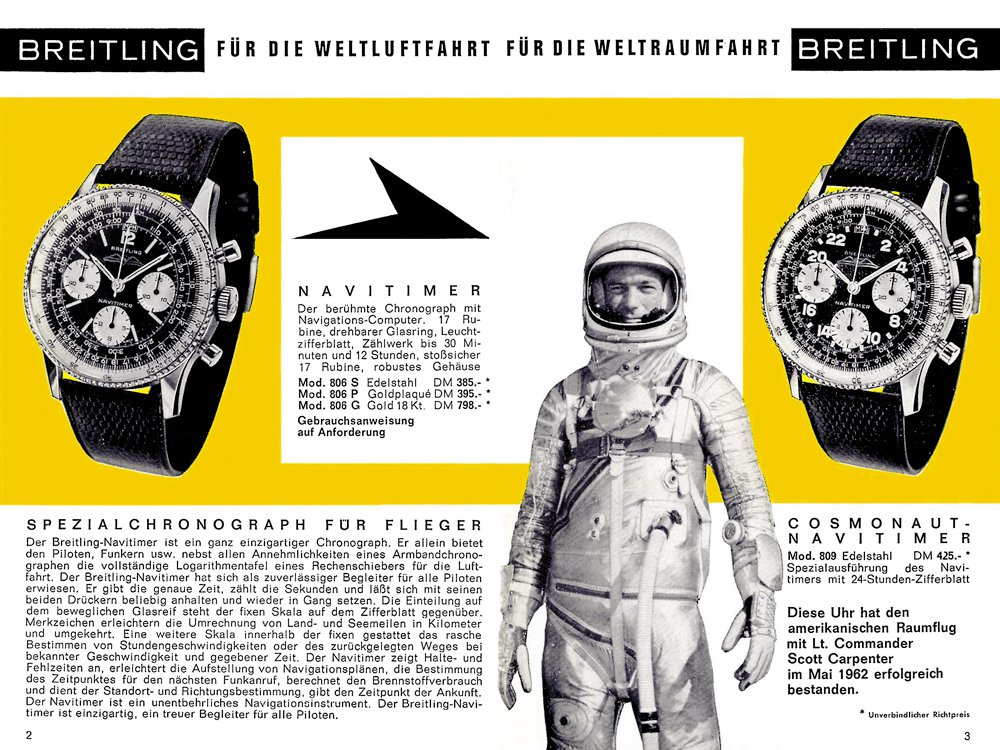
Scott Carpenter and Sean Connery were not the only celebrities whose wrists were fitted with Breitling watches. Actress Raquel Welch added an unmistakable dash of glamor to the Co-Pilot watch in her film Fathom. Jazz legend Miles Davis was a Navitimer wearer, as were Formula 1 drivers Jim Clark and Graham Hill. It is now known that Olympic gold medalist Jean-Claude Killy, famously associated with another watch brand, also wore a Breitling – even on the slopes – between 1965 and 1967. And more recently, identical-twin NASA astronauts Scott and Mark Kelly have relied on their Breitling wristwatches both in space and on solid ground.
The final chapter in the Breitling family saga was one of the most important. In 1965, Willy Breitling participated in the development of the world’s first micro-rotor automatic chronograph in cooperation with Jack W. Heuer, the Büren-based movement manufacturer, and Dubois-Dépraz, a specialist in chronograph control wheels. The 1969 launch of the Chrono-Matic, with its winding crown on the left side, caused a sensation on the international watch scene. This true original has since been optimized several times and manufactured in different versions.
1969 also marked the beginning of the era that, somewhat improbably for the Swiss watch industry, was marked by electronically controlled wristwatches. Breitling, like most other major brands, responded to the trend with its own quartz models, including a quartz Chronomat, and starting in 1973, they even introduced quartz versions of the iconic Navitimer.
THE END OF AN ERA
In spite of the turbulence of the late 1970s, Willy Breitling remained a grand seigneur of the old school. He was struggling with his health, and his sons, Gregory and Alain, were still young and – like many others – uncertain about the future of the industry. The consummate entrepreneur decided it was time for an orderly retreat. In April 1979, shortly before his death, he sold the remaining assets along with the familiar brand names and the well-established watch models, including his beloved Navitimer, to the visionary entrepreneur Ernest Schneider, who, fittingly, was also a watchmaker and a pilot, and whose family would remain the guardians of the Breitling legacy until 2017.
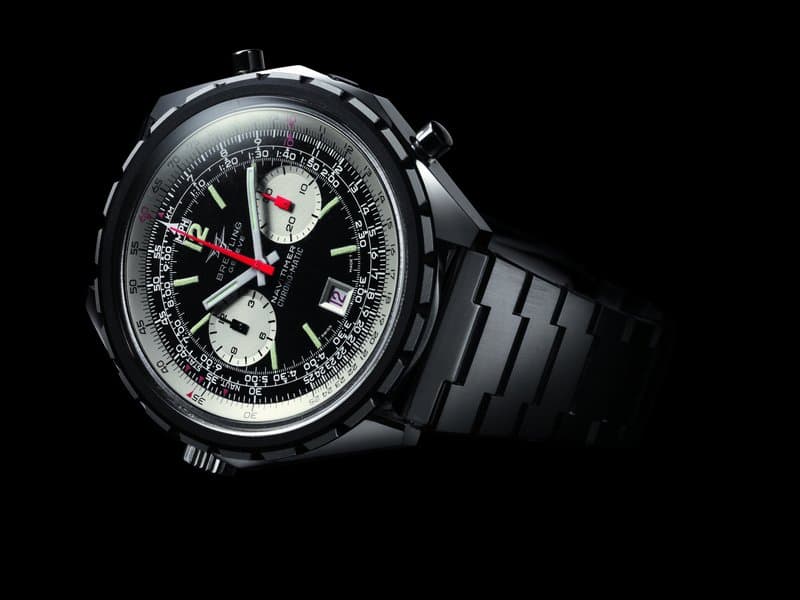
BREITLING UNDER NEW OWNERSHIP
After the registration of Breitling Montres SA on November 30, 1982, the company headquarters was relocated to Grenchen. Under its new ownership, Breitling celebrated its 100th anniversary in 1984 with a completely redesigned Chronomat, which was characterized by its bezel riders and its automatic chronograph caliber. The design was based on a watch that the brand had developed the previous year for the renowned Italian flying squadron Frecce Tricolori.
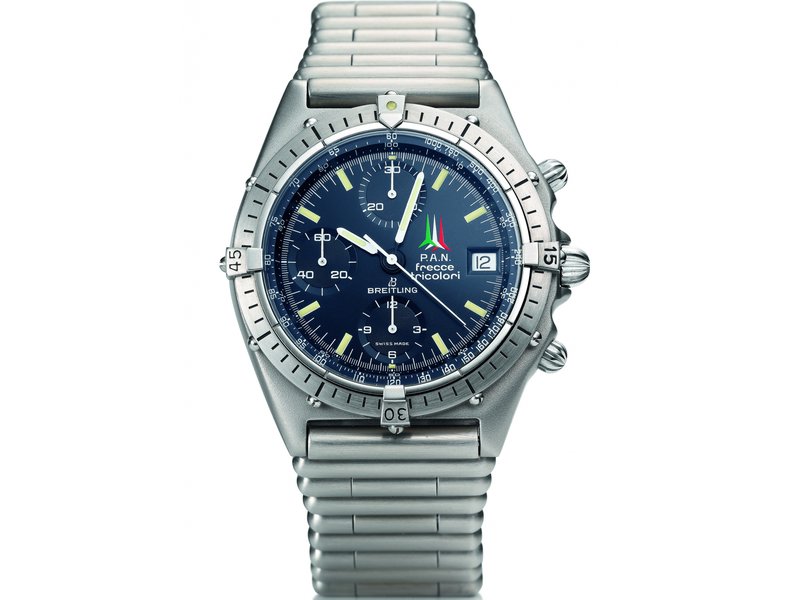
After the registration of Breitling Montres SA on November 30, 1982, the company headquarters was relocated to Grenchen. Under its new ownership, Breitling celebrated its 100th anniversary in 1984 with a completely redesigned Chronomat, which was characterized by its bezel riders and its automatic chronograph caliber. The design was based on a watch that the brand had developed the previous year for the renowned Italian flying squadron Frecce Tricolori.
In 1985, the multifunction Aerospace was introduced. This innovative quartz watch with a titanium case had a double display – analog and digital – and its dial featured two liquid crystal display (LCD) screens. It was notable for its particularly simple and logical control system and an impressive array of functions, all of which were activated by simply turning, pressing, or pulling the crown.
1985 also marked a new beginning for the Navitimer, which was introduced as a manual-winding version. The Reference 81600 celebrated the original Navitimer, both in terms of looks and function, while an automatic version was released in 1987. Those Navitimers once again became best-sellers, and were notably worn by French singer Serge Gainsbourg.
Another star was the Emergency, which, as its name suggests, was the first wristwatch to be equipped with an integrated emergency transmitter. It was launched in 1988 with a single antenna, but truly came into its own in 1995 with the introduction of an ingenious patented antenna deployment system. The later model’s micro-transmitter, which was locked onto the international air distress frequency, was equipped with two antennas and had a 48-hour independent power reserve.
And just in time to celebrate another milestone anniversary – the 125th – Breitling introduced the in-house automatic chronograph Breitling Manufacture Caliber 01, an innovation that granted the brand membership in the elite circle of top watch manufacturers.
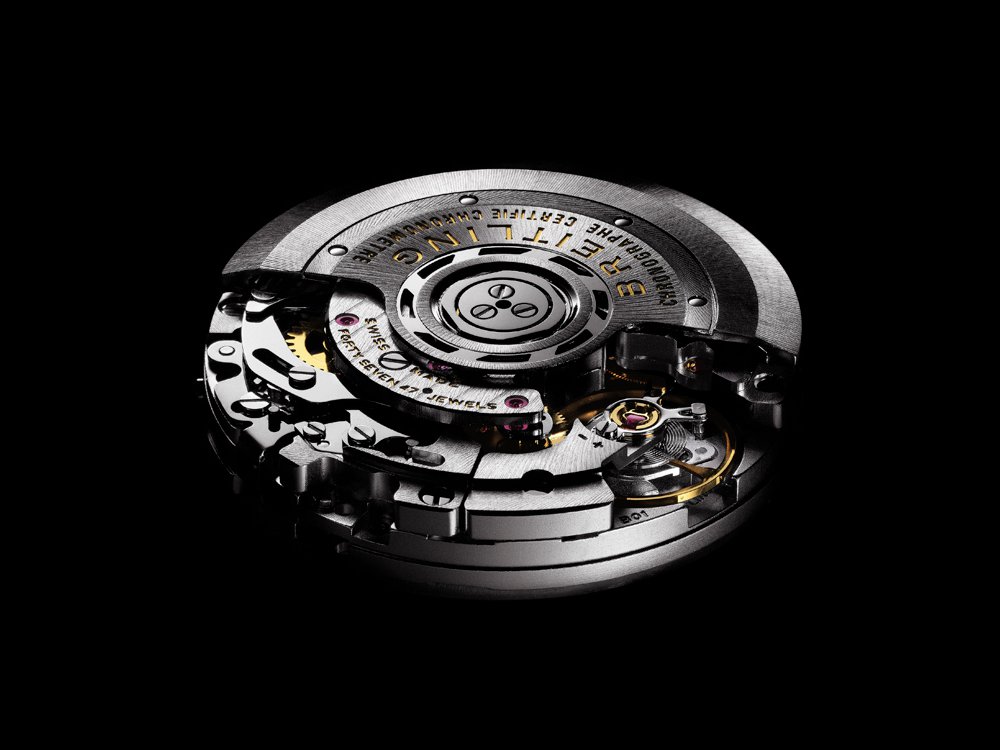
The Chronospace was launched in 2010. A dazzling descendant of the Aerospace, its functions not only included the time and a one-hundredth of a second chronograph, but also a digital display with an alarm, a calendar, a countdown timer, GMT time, and a second time zone along with the slide rule function so closely associated with Breitling’s watches for professionals.
2015’s Exospace B55 combined the appeal of an outstanding wristwatch with smartphone connectivity. Particularly eye-catching with its black titanium case and rubber strap, it was – in true Breitling tradition – designed for aviation professionals. Watch adjustments, including time-setting, time zone adjustments, and alarms could be made using the wearer’s smartphone, and two digital displays on the watch notified the wearer that they had received e-mails or text messages, and also alerted them to incoming phone calls and calendar appointments.
BREITLING PREPARES TO FLY INTO THE FUTURE
In May 2017, Breitling became a part of CVC Capital Partners, and in July of that year, Georges Kern assumed the role of CEO. With his team, Georges Kern, who has already had a distinguished career in the watch industry, looks forward to carrying on a rich tradition whose roots go all the way back to a small workshop in St. Imier in 1884.
